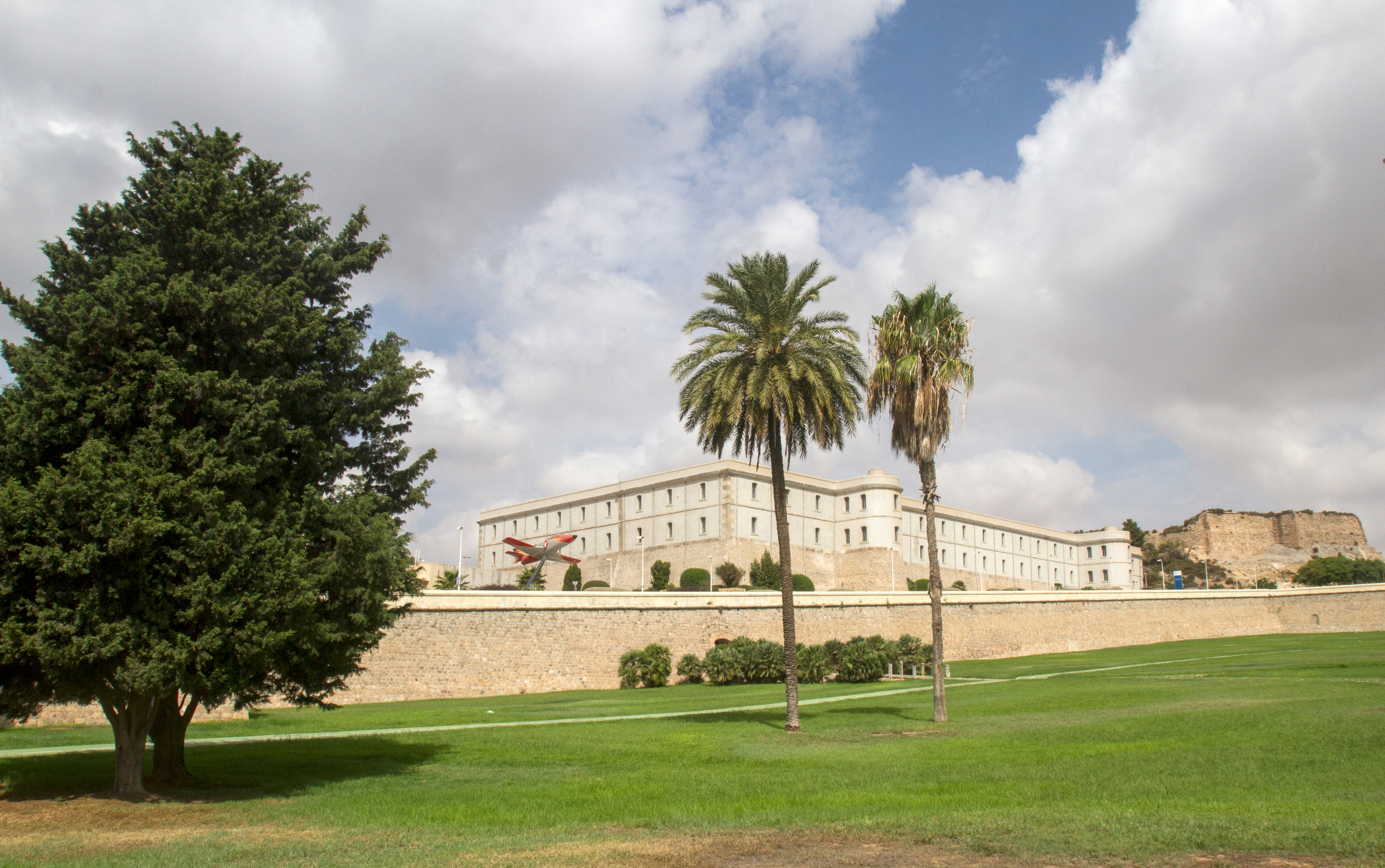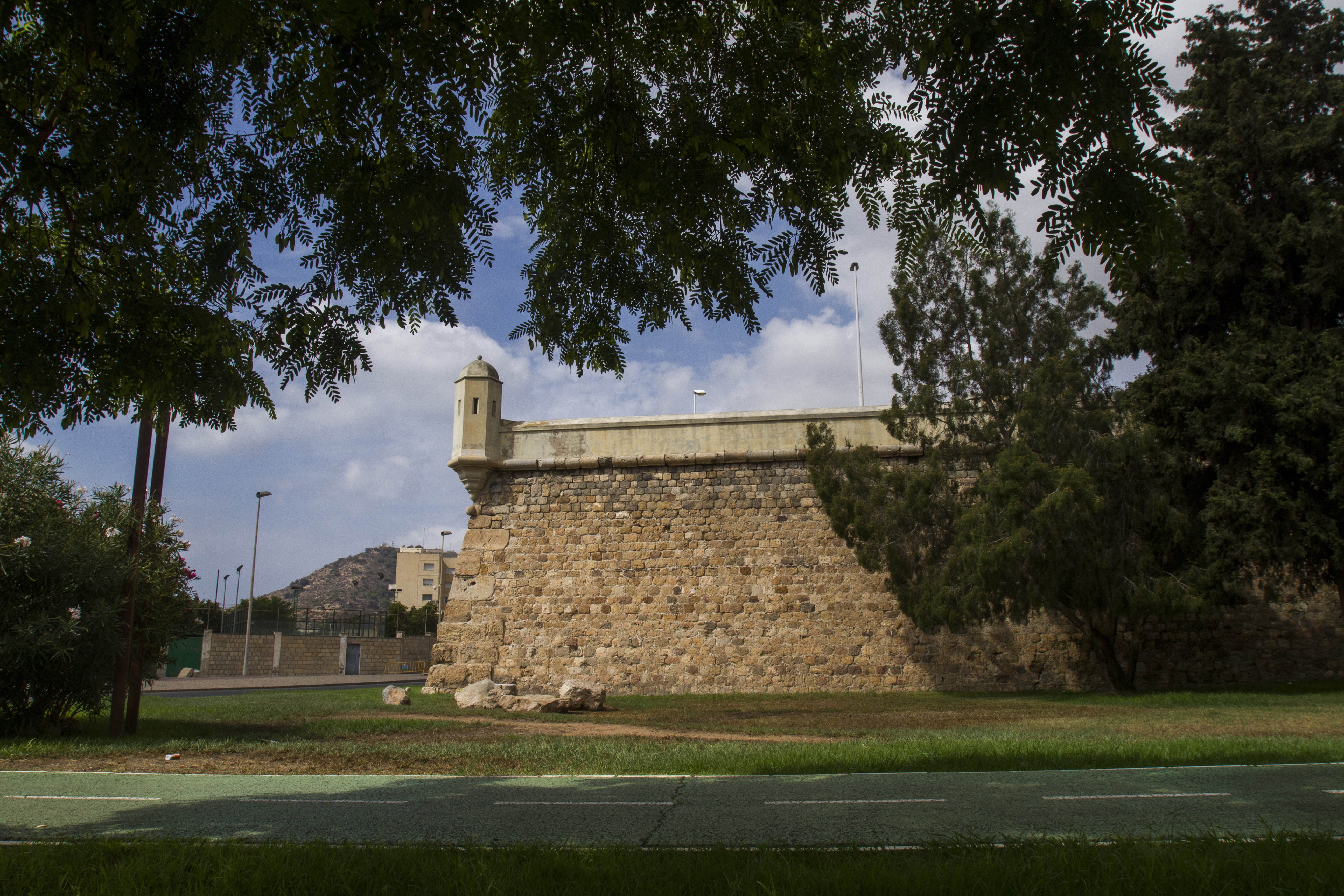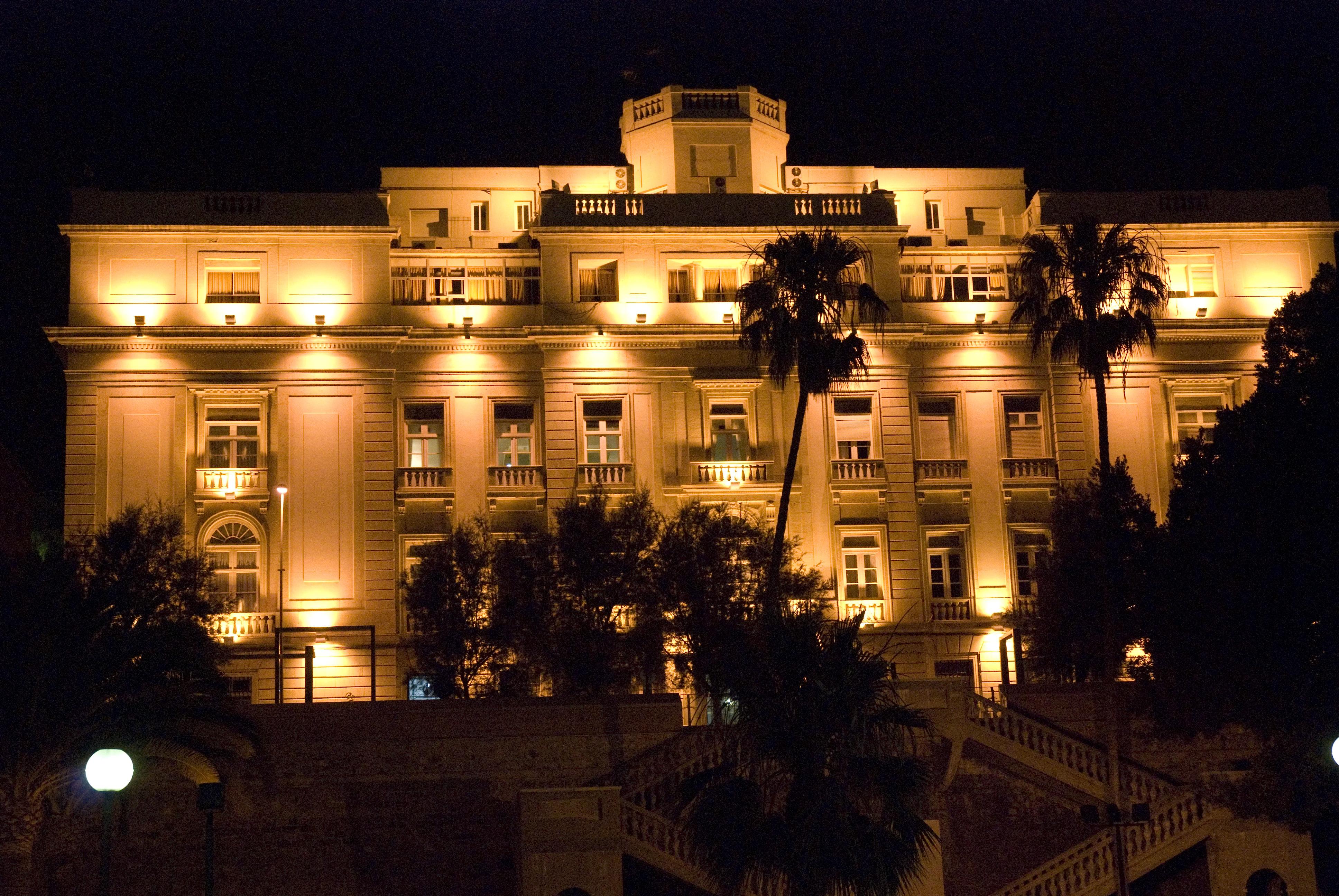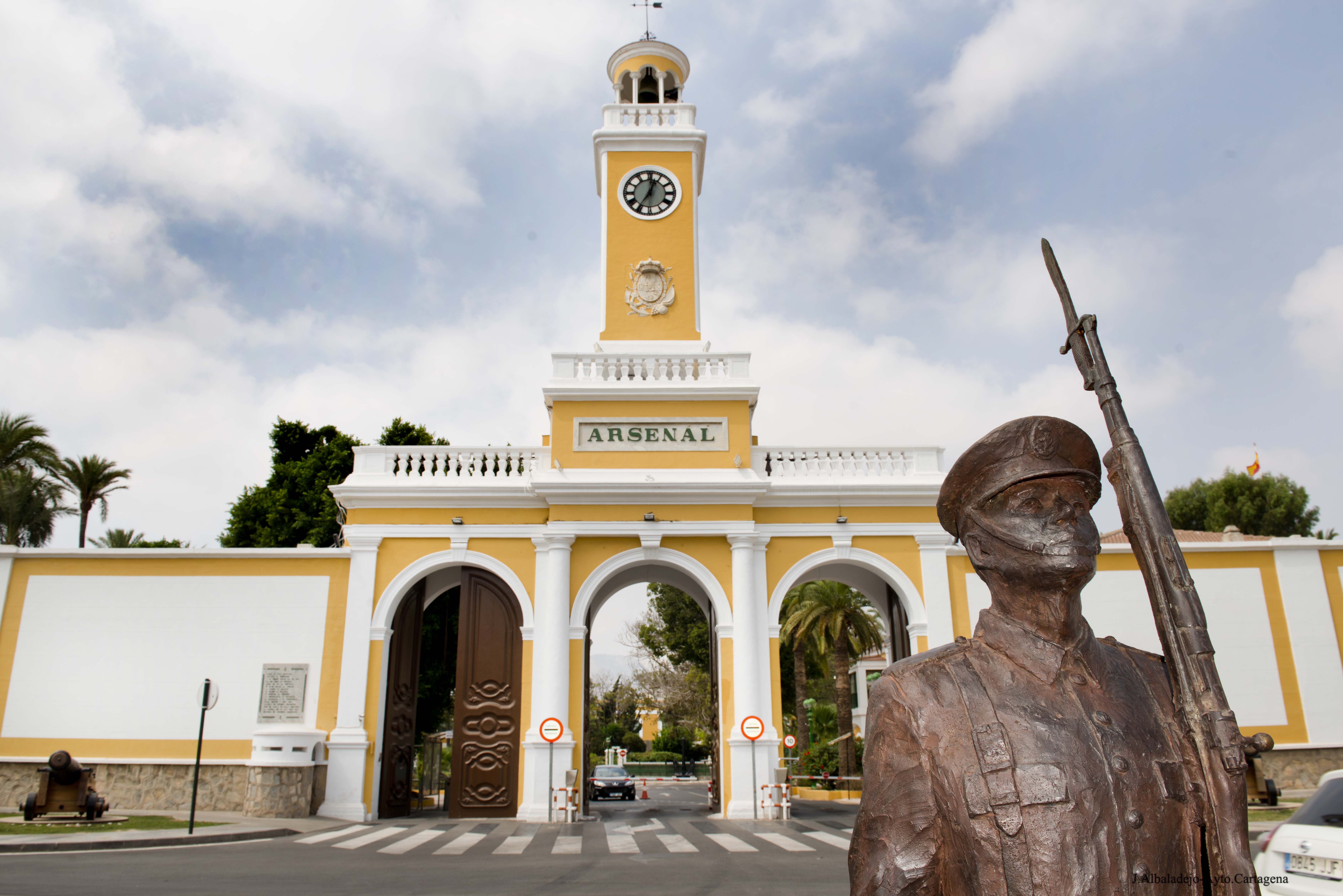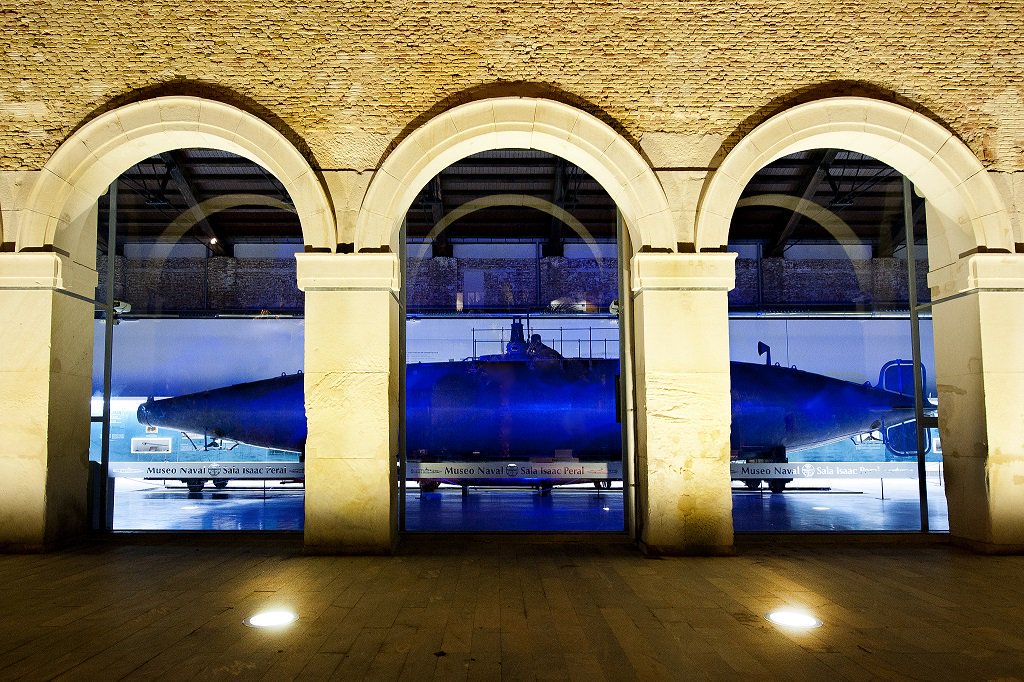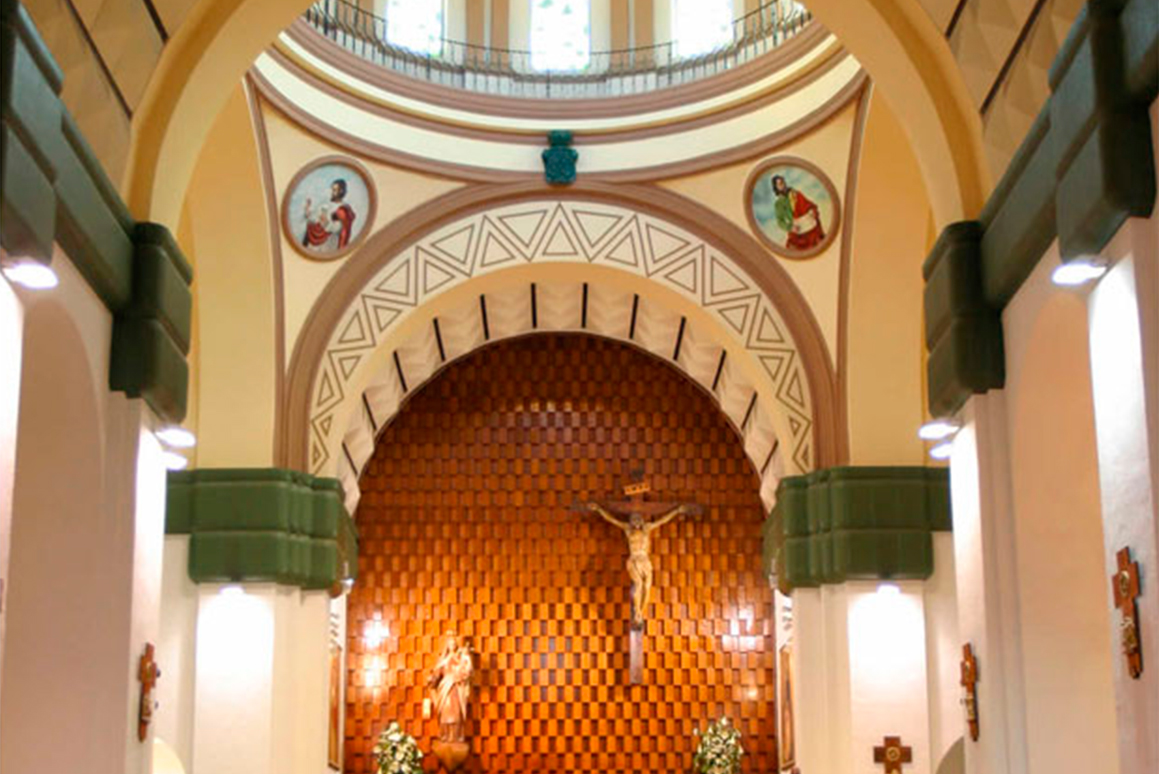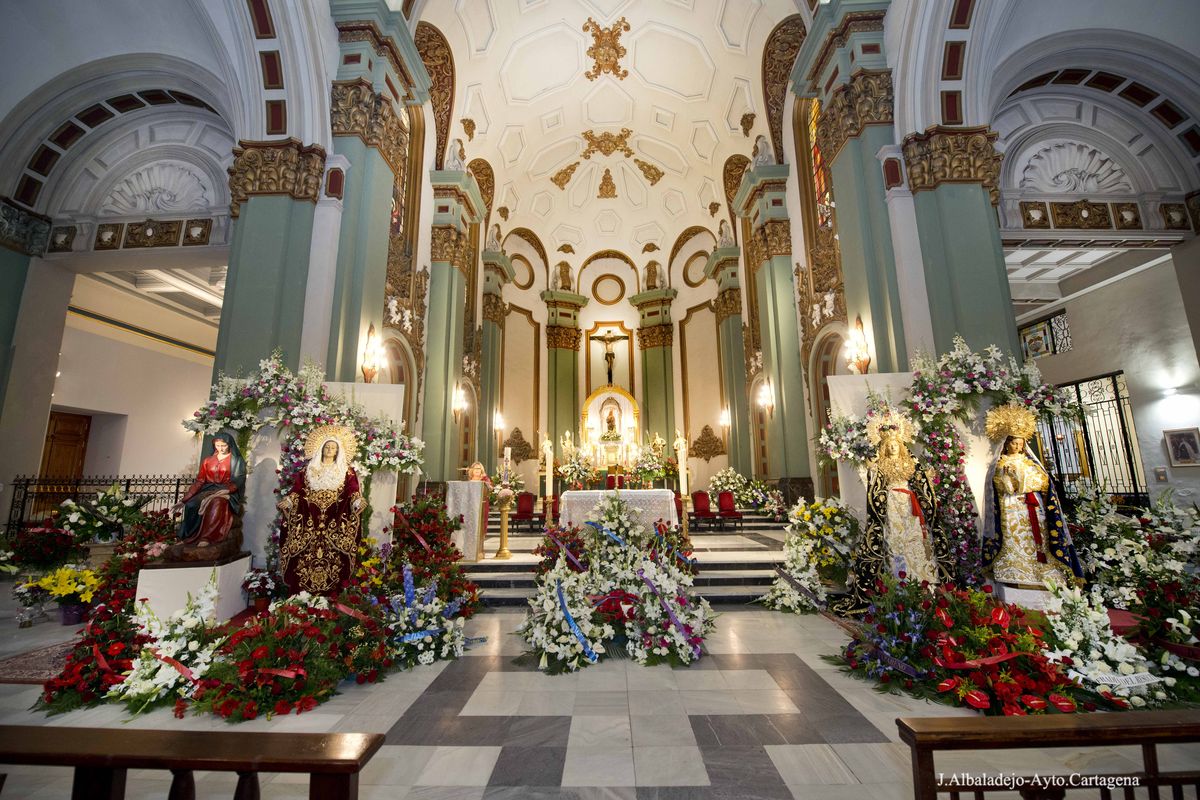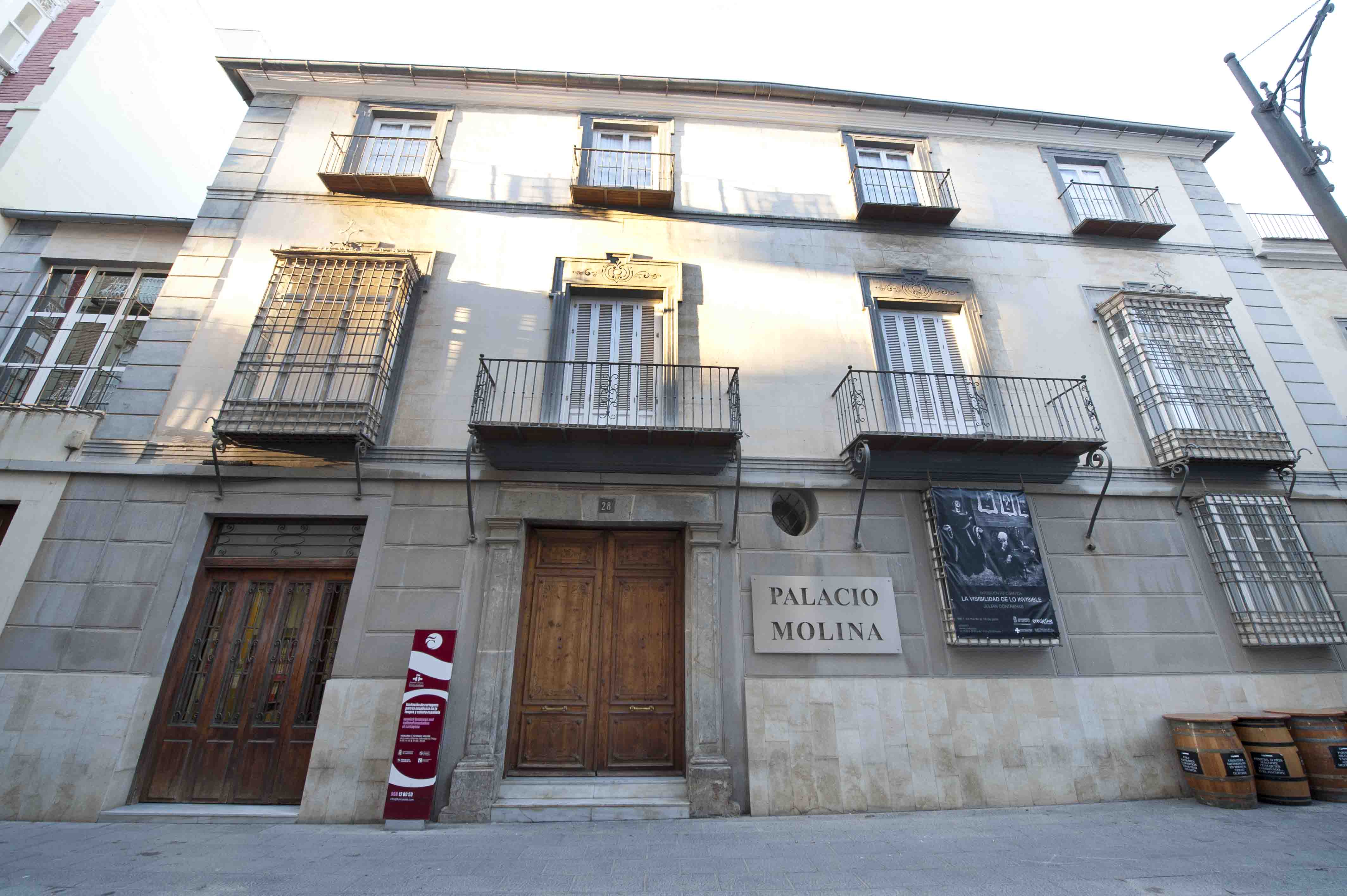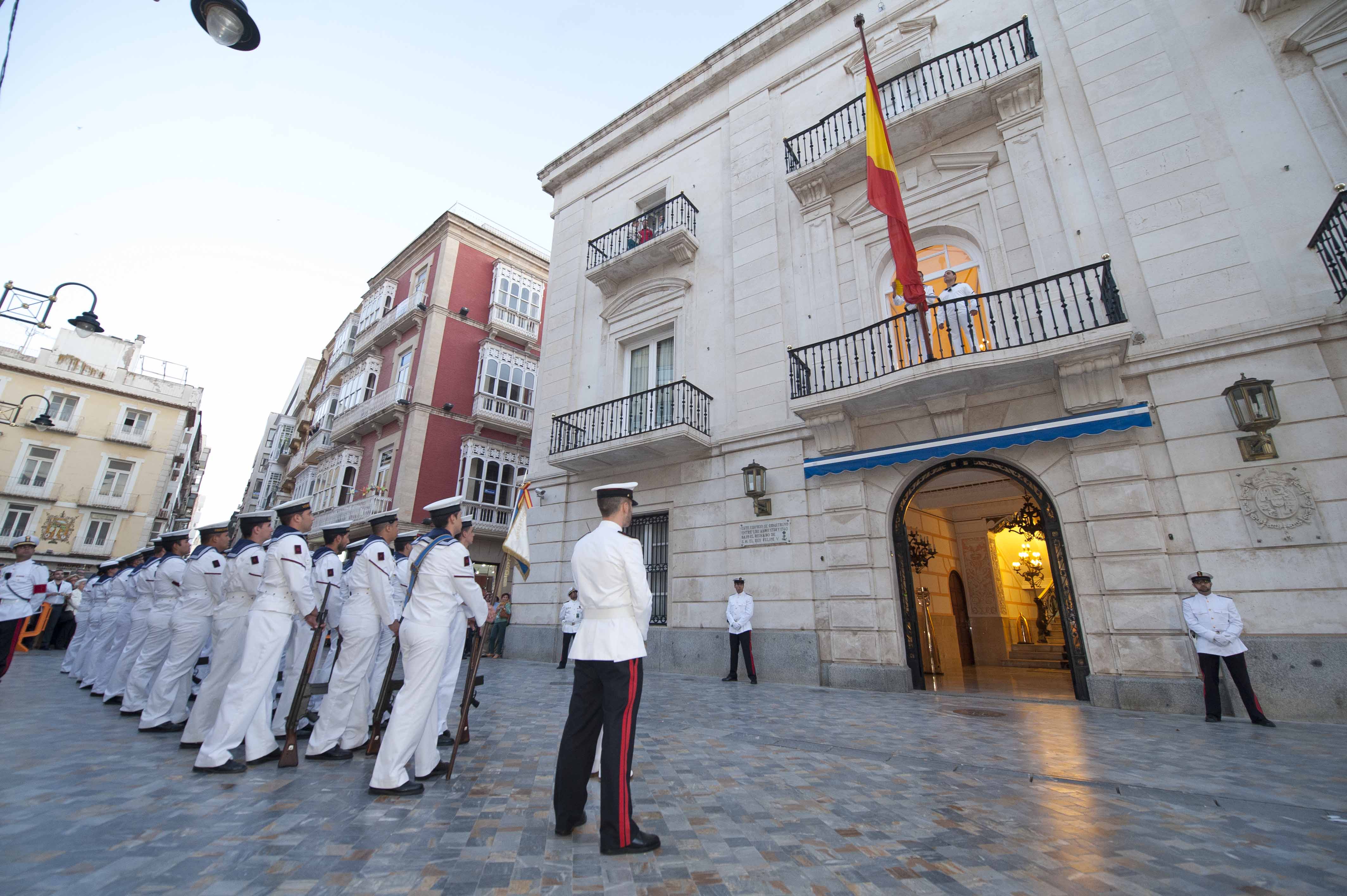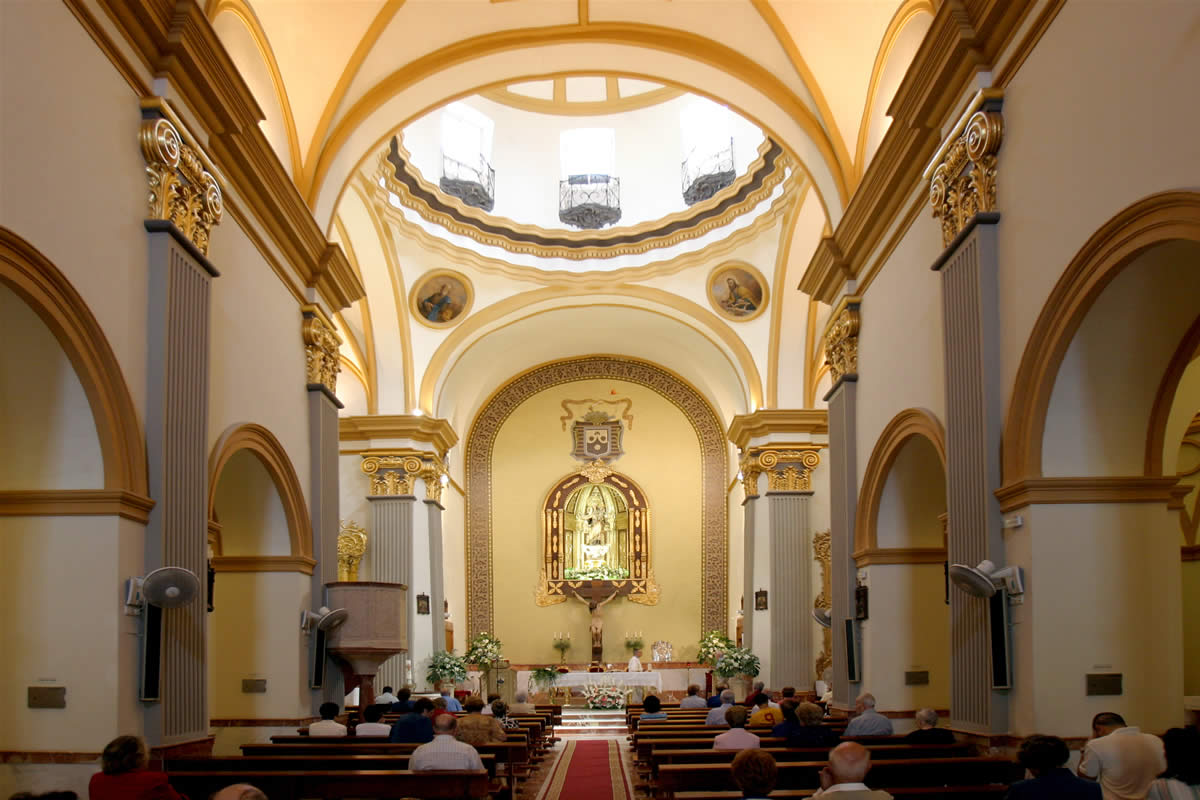01. Campus Muralla del Mar.
The old military hospital and the Antigones Barracks, both neoclassical buildings that were constructed in the 18th Century when Cartagena had become the principal Spanish naval base of the Mediterranean, have been renovated and adapted for university use. The characteristic military architectural features of the outside of these buildings remain intact. Part of the Hospital is the Autopsy Building, where classes of anatomy were held.
02. Carlos III Rampart
A cornerstone in the defence plan for the Arsenal and Plaza of Cartagena, the rampart was built by
Charles III. It contained three main gateways. Nowadays, all that remains is the stretch of wall between the former quay and San José, Gates and the Arsenal defences. In 1891, it lost its defensive capacity. It is situated at the old San José Gate, and was one of the main gates into the city through the ramparts of Charles III. After the demolition of the gate in 1916, only two out of five vaults survived; these were used by guards. Nowadays, they have been respectfully restored and the preserved structures offer residents and tourists a full range of maps and information. Their restoration marked the beginning of the recovery of the old walls of the city and their transformation into a broad promenade from Bastarreche Square to City Hall.
03. Midshipmen’s Barracks
Planned in 1785 as a naval academy and barracks, the building currently houses naval offices. With the exception of the top floor, few modifications have been made since its construction.
04. Arsenal Gate
The sole remaining entrance to the ramparts of Cartagena built in the 18th century. In 1865 a clock
tower was built over the gateway, highlighting the importance of the area to which it gives access.
05. Naval Museum
The old headquarter for prisoners and Moors built in the 15th century, was the Headquarter of seamanship in instruction and nowadays the place where the University and the Naval Museum coexist. Among the museum's subject areas include those dedicated to Isaac Peral and submarines.
The original submarine was invented by Isaac Peral, born in Cartagena. The craft, designed in 1888 and now is exposed in the former boiler room of the Arsenal.
06. Church of Santo Domingo
Once part of the Dominican convent of San Isidoro, the Church's highlight is the Marraja brotherhood chapel. Built in 1695 and recently restored, it houses a baroque altarpiece of multi-coloured wood featuring a variety of Holy Week images.
07. Church of Santa María de Gracia
Built during the 18th century and renovated in the 19th and 20th centuries, its façade remains unfinished to this day. The original plan was to build a church of cathedral proportions, the natural successor to Santa María la Vieja. The most architecturally significant sculptures inside are the medieval image of the Virgin of the Rosell (former patron saint of the city) and the figures of the Four Saints, the work of Salzillo. The Holy Week processions have begun from this building ever since its construction in the 18th century.
08. Molina House
This building –constructed in the 18th century– has a Neoclassical style. Its austerity, the stone and brick combination of the façade and the iron work together with the cast iron balconies are outstanding features. The most representative examples of rural handicrafts from Cartagena and the region are on display in the Handicrafts Centre on Honda Street at the back of the building.
Naval Headquarters Palace
The "Capitanía" was built in 1740 over part of the space occupied by the King's House. The façade was reconstructed in the 19th century and renovated in the 20th The interior is richly decorated, with its imperial staircase being especially notable
09. General Captaincy
The Palace of The General Captaincy was built in 1740 as part of a large group of military buildings located on the same block next to La Casa del Rey. The façade was rebuilt in the 19th century and renovated in the 20th century.
10. Church of El Carmen
The church was once part of the former Convent of San Joaquín, the home of the Barefoot Carmelite Order. The façade combines elements of classical and popular architecture, and the interior has a single nave with side chapels.
11. Artillery Headquarters
Its architecture is typical of the 18th-century military constructions so widely represented in the city. The building, which was virtually destroyed by an explosion towards the end of the canton uprising in 1874, was not rebuilt until the beginning of the 20th century. The side walls best retain the original building's appearance. It is currently the headquarters of the Municipal Historical Archives and the Military Museum which, through its maps, models and documents, illustrates the history of this military arm and its links with the city since 1508.
